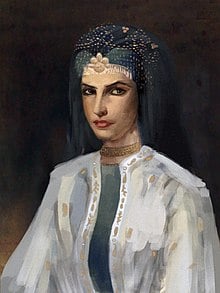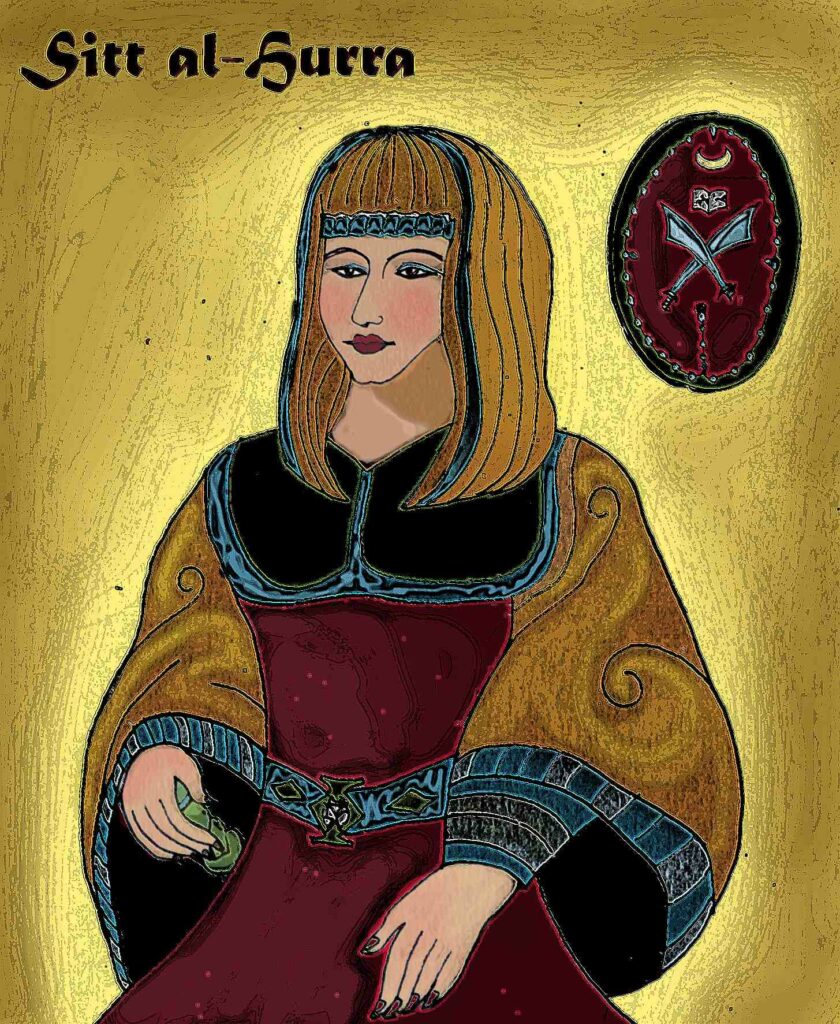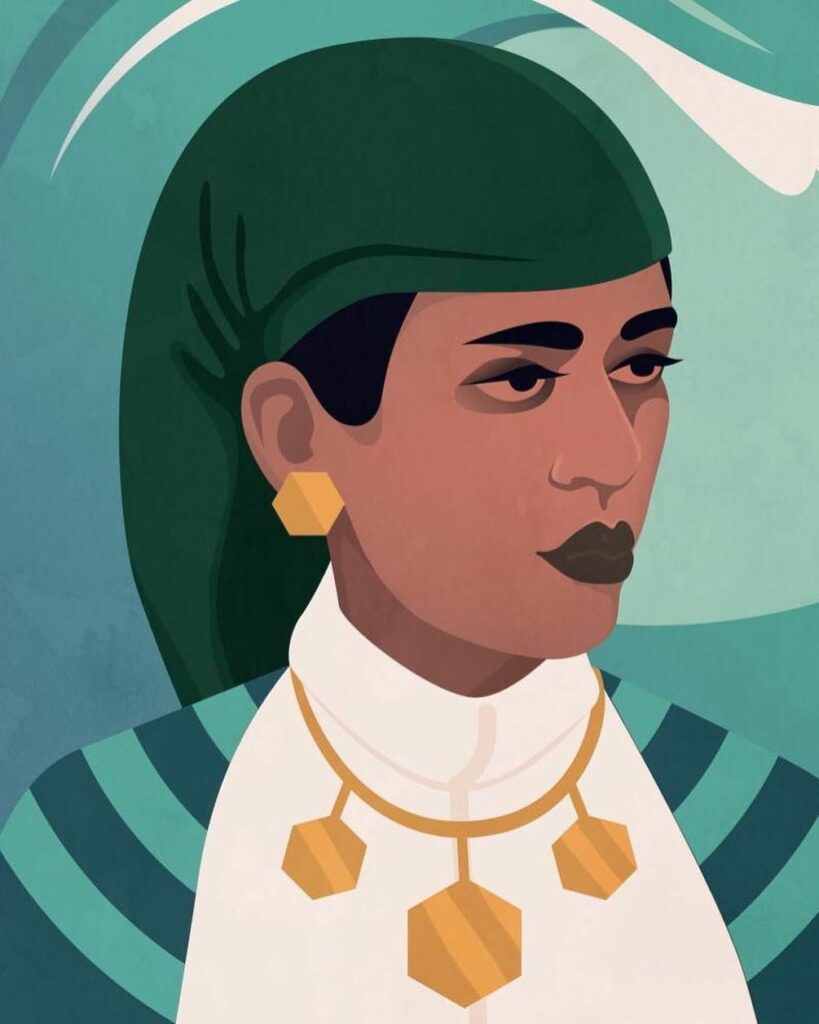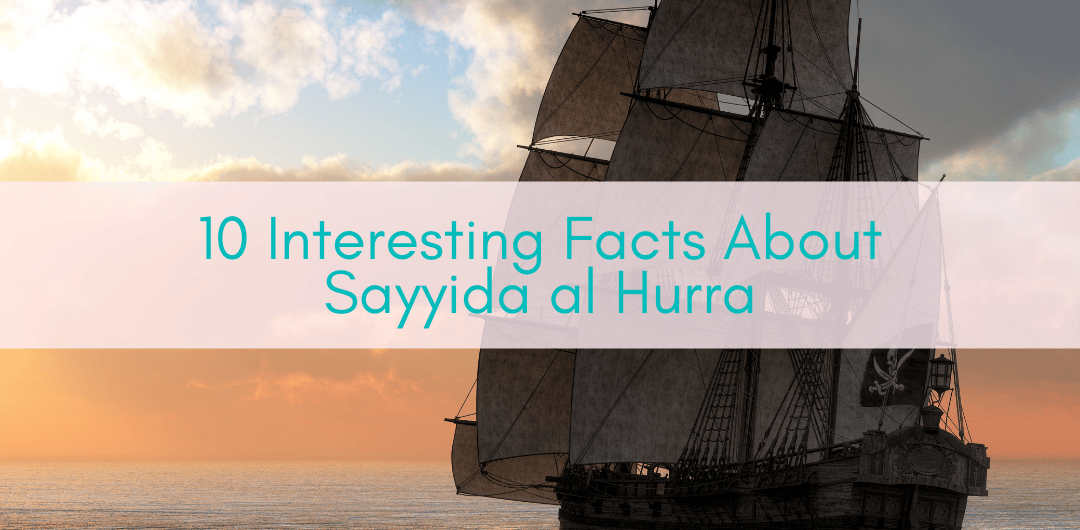Sayyida al Hurra was a remarkable woman. Let’s study the life of the Pirate Queen keeping in mind the context of her time, mainly the struggle between the Muslim and Christian empires that occurred throughout her life.

1. Her family lived in exile
She was born around 1485. Hers was a family of Andalusian noblemen (and women) who had to flee to Morocco in 1492, when Ferdinand and Isabella conquered Granada. Until then Granada had been a Muslim kingdom, ruled by Muslims for close to eight centuries. In 1492, it became a part of Christian Spain, and remains a part of it still . The family settled in Chefchaouen. Sayyida’s childhood was happy, but dominated by the fact that her family was in forced exile.
2. She was well educated
Sayyida received a first-class education during her childhood, was fluent in several languages and also excelled in theology.
3. She married a man 30 years her senior

But at the age of 16, she was married off to a much older man. She had been promised to Sidi al-Mandri II, a man 30 years her senior and also a refugee from Andalusia, when she was only a child. He was the governor of the city of Tétouan, which was then Morocco’s major port and a tactical base against Ceuta in the North.
Due to her prime education, her intelligence and the fact that she possessed a strong character, Sayyida helped her husband a lot with his affairs governing the city and was a de facto vice-governor. Her husband trusted her explicitly, and even let her run the city if he had to travel.
4. Sayyida al Hurra wasn’t her real name
Sayyida al Hurra’s real name was Lalla Aicha bint Ali ibn Rashid al-Alami, Hakimat Titwan. Why, you may ask yourself, did she go by another name? Well, in 1515, her husband passed away and she took the reigns as governor of the city. In the Muslim world, women have held power for more than fourteen centuries. That did, and still does, vary from region to region, of course, but there are many historical examples of women holding power, as far back as the times of the Prophet Muhammad.
The population of Tétouan, already accustomed to her being in charge together with her husband, did not only accept her, but gave her the title ‘ Al Hurra’. Al Hurra means ‘their partner in the diplomatic game’, which seems like an incredible description and acceptance of how power should be wielded, now and then. So while Sayyida al Hurra is known under this name, it was rather a title than a name. ‘Sayyida al Hurra’ roughly translates into ‘Sovereign Lady, Governor of Tétouan’, or ‘noble lady who is free and independent’.
5. Her first marriage was a brilliant strategic move
Sayyida was in an exceptional position of power in her role as vice-governor, and later governor of Tétouan. Her brother, Moulay Ibrahim, was appointed as the vizier to Ahmed al-Wattasi, who was then the Sultan of Fez. Thus the siblings were strategically positioned as major power player in Morocco. The aim was to unify Morocco against Spain and Portugal, whose powers were growing rapidly.
6. She found a way to make Tétouan prosper
Sayyida al Hurra governed the city for approximately the next 25 years. Under her rule, Tétouan reached a great level of prosperity. That, however, was largely due to pirate activities.
7. She engaged in piracy
As I mentioned in the beginning, you have to take in these facts with the historical background in mind. Piracy has a long history, in the Mediterranean as well as on other oceans around the world. Piracy was rampant during Sayyida al Hurra’s lifetime. Sometimes pirates were outsiders, individuals attacking and robbing ships. But often piracy was utilized by legitimate governments. The bounty from these raids was often a major source of income for these governments. You have already learned that tensions ran high between Morocco, Spain and Portugal. Piracy was committed on both sides, so rather than judge, simply see it as what it was: acts of war and resistance with whatever means necessary.
8. She became the Pirate Queen

Sayyida al Hurra made the acquaintance of Oruç Reis, known in the West as Barbarossa. Oruç Reis and his older brother were notorious pirates. They moved around the mediterranean Sea as members of the so-called Barbary corsairs and servants of the Ottoman sultan. Joining forces with these famous pirates earned Sayyida al Hurra the title of ‘Pirate Queen’. With her navy solely made of privateers she fended off the aggressive Spanish and Portuguese looking to colonize her new home country.
9. She is considered one of the most important female figures of the Islamic West
Along with her power she grew her reputation, which lead to sultan Ahmed al-Wattasi proposing to her in 1541. She accepted, but refused to travel to his home town of Fez for the ceremony, which would have been the custom. Ahmed al-Wattasi accepted and they got married in Tétouan instead, which makes this the first time in history that a sultan’s marriage took place outside the capital. Sayyida al Hurra truly was a leader among leaders.
10. Her long reign ended in a surprising way
In October 1542 Sayyida al Hurra’s reign as the governor of Tétouan ended when she was overthrown by her son-in-law, Muhammad al-Hassan al-Mandri. There had been some grumbling about her constant spats with the governor of Ceuta among the citizens, and the fact that Ceuta cut economic ties hurt the merchants in Tétouan. Muhammad al-Hassan al-Mandri saw that as his chance to end her reign and take her place. She retired to Chefchaouen, where she died on July 14, 1561. She was the last female Islamic rukler to carry the title of ‘al Hurra’.
Her Adventures is an education and empowerment community dedicated to helping women explore beyond their boundaries. We welcome all people who identify as non-masculine/non-male to connect, educate and inspire each other with their stories, fears, knowledge, questions, and ideas. Because together we make each other strong. We hope you will join us and see the world.
Topics
Subscribe
Subscribe for news, updates, giveaways, and more!
JOIN GIRLS WHO TRAVEL
Join our inclusive community
of tens of thousands of women who
share your passion for travel in our
Girls Who Travel Facebook group!








